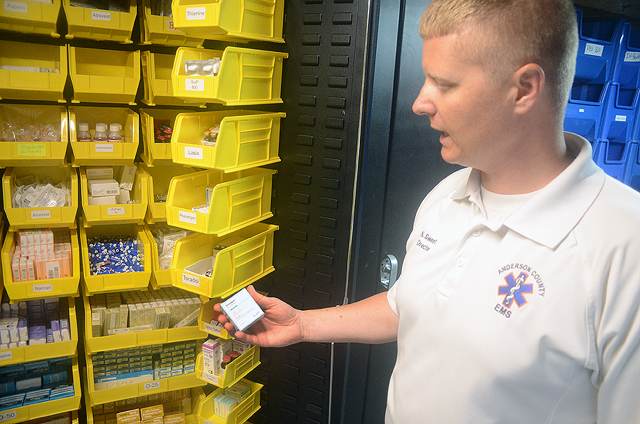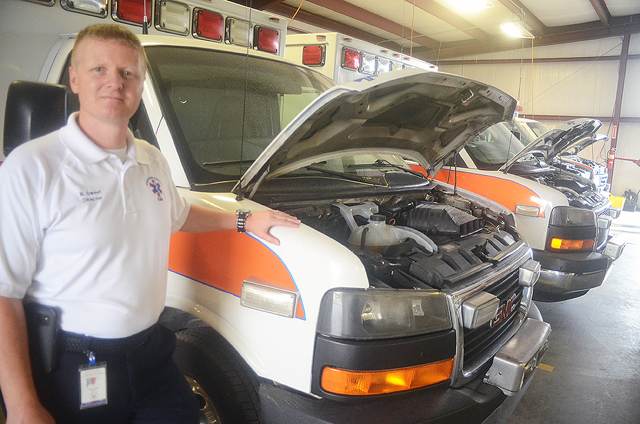Making sure EMS is the ride for your life
Many factors involved in keeping county ambulances on the road
Emergency services — police, fire, ambulance — are like mothers, Anderson County EMS Director Nathan Sweet says — sometimes people tend to take them for granted.
Keeping the ambulance service ready and on the road is a task Sweet oversees every day.
Anderson County EMS has 17 ambulances. On peak days — Monday, Wednesday, and Friday — 10 of those vehicles are on the road.
Six ambulances are manned 24 hours a day every day of the week.
Sweet said the “peak days” are convalescent runs, mostly scheduled non-emergency trips from nursing homes to medical facilities.
In a perfect world, Sweet said, EMS would have eight trucks for 911 emergency calls — six manned 24-7 with an additional two staffed with medics during the day — and five for convalescent transport.
Convalescent transports usually have two EMTs, but no medics.
“We could probably get away with four for convalescent transport,” Sweet noted.
But that’s in a perfect world.
What Sweet really wants is for people to start having conversations about the EMS service.
In the past several months he has held “public input” sessions in Clinton, Oak Ridge, and the Rosedale Community.
The turnout was … Underwhelming?
“Some of the County Commissioners came out, but I don’t think there were any private citizens at the Clinton session. There were maybe three or four at the Oak Ridge meeting, and I think about 12 when we were in Rosedale.”
Still, he’s getting more of those conversations thanks to a recently completed audit of the county’s EMS.
Sweet said the audit has brought attention to not just the needs of the EMS, but some of the battles the department routinely deals with.
On Monday, June 11, there were six of the 17 EMS ambulances out of service for maintenance. Most of the maintenance was minor — one ambulance had a dead battery and Sweet said he hoped it just needed a boost, or worse case scenario a new battery.
“We do routine scheduled maintenance on the vehicles,” Sweet said.
But Monday was a “peak day,” so that left EMS with one back up vehicle.
The “life span” of an ambulance is about seven to 10 years, and the recommendation for “front line” ambulances — those used for 911 emergencies — are to have no more than 300,000 miles.
Anderson County EMS routinely has vehicles with 600,000 miles.
There is a difference, however, between rolling mileage and engine wear.
“When an ambulance is on a call, the engine is left on. When the crew stops to eat, the engine is on. That creates engine wear,” Sweet said.


